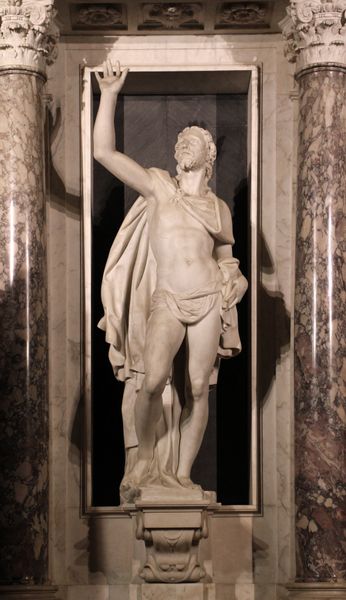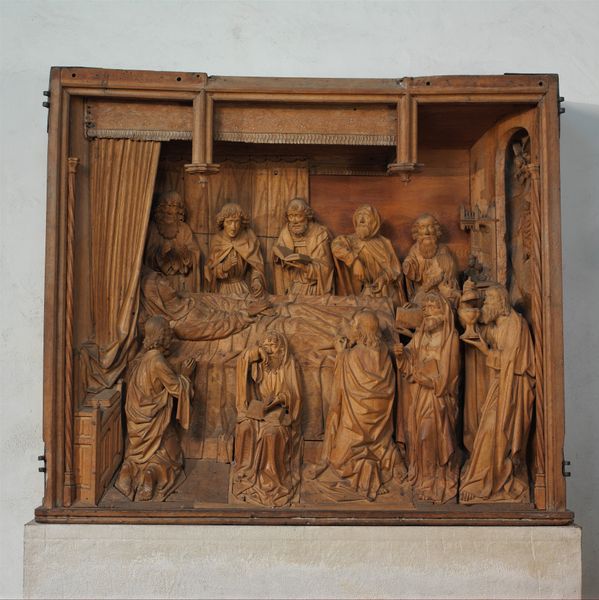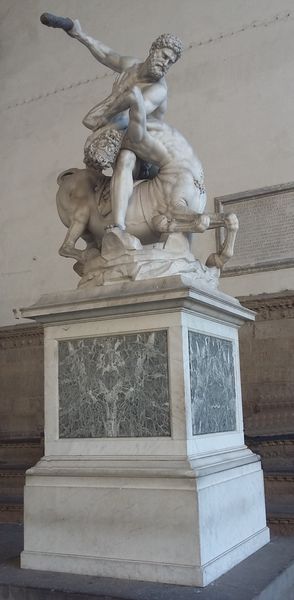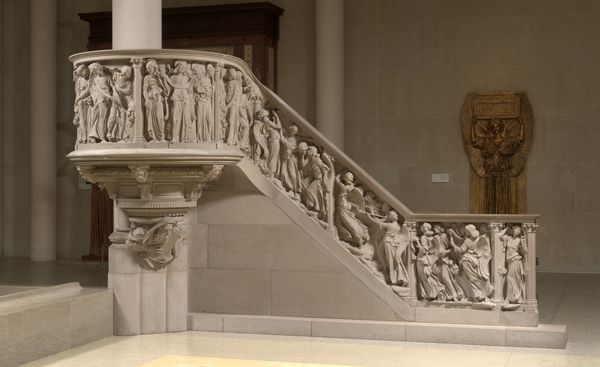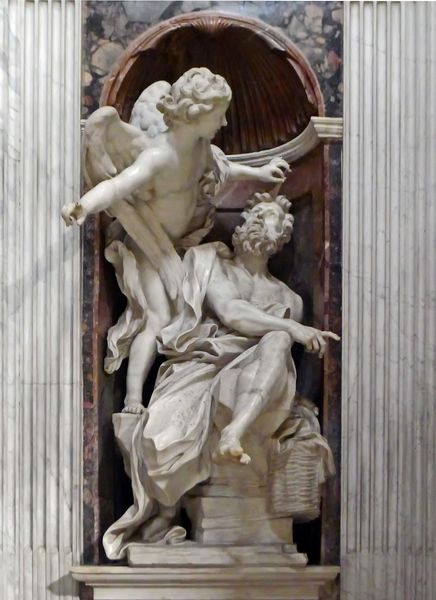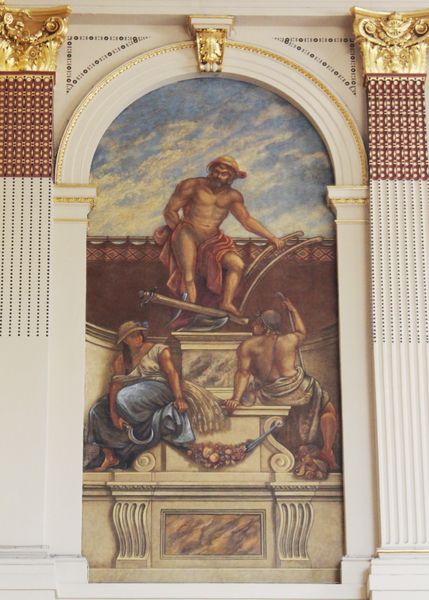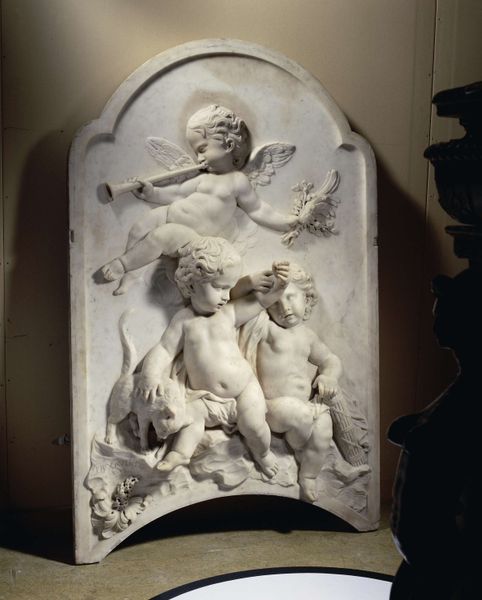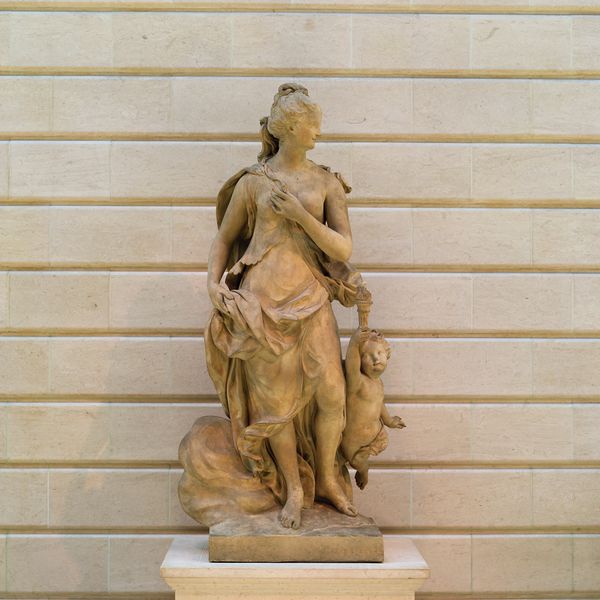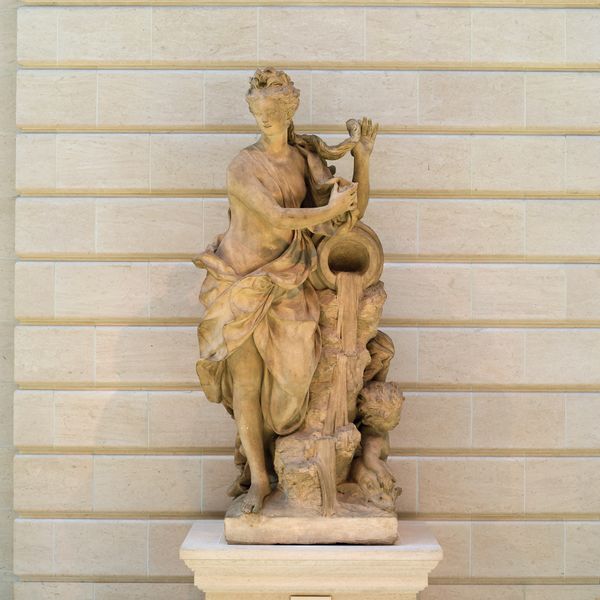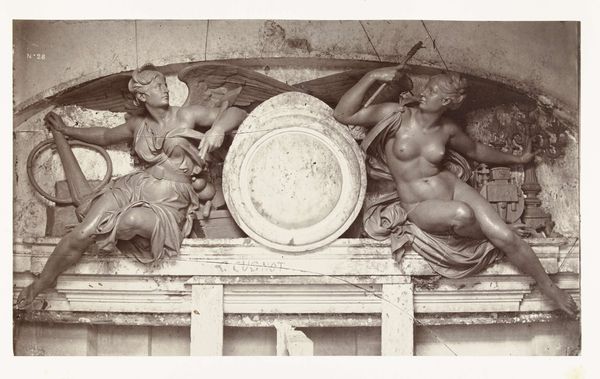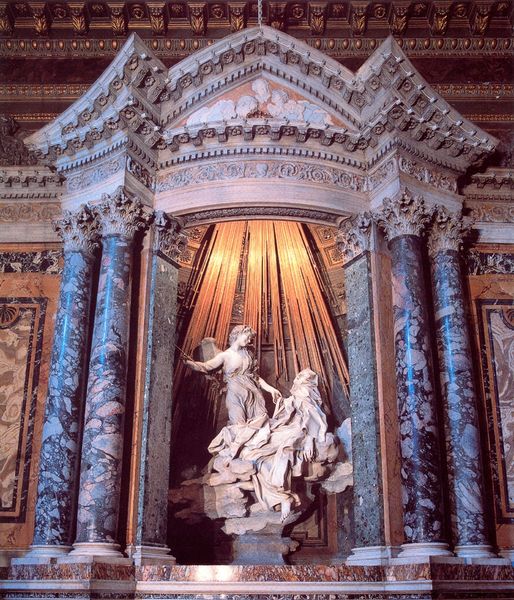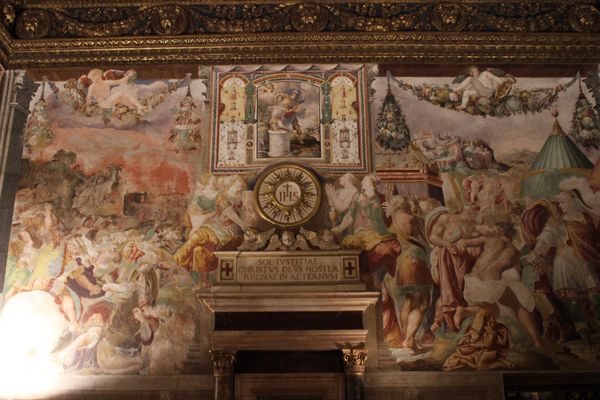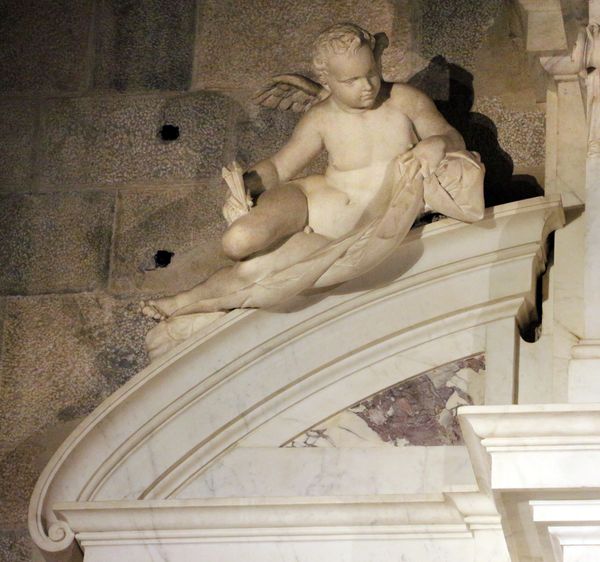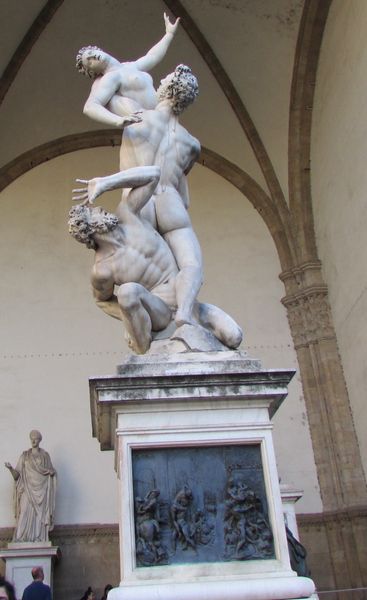
carving, sculpture, marble
#
portrait
#
neoclacissism
#
carving
#
historic architecture
#
building art
#
sculpture
#
urban art
#
history-painting
#
academic-art
#
marble
Copyright: Public domain
Curator: This is John Flaxman's "Monument to Earl Howe," a neoclassical marble carving residing in St. Paul's Cathedral. It presents a powerful, yet restrained grandeur. Editor: It has a curious serenity, even. Given that it's a war monument, the lack of visible struggle or anguish is striking. There's almost a glacial composure about it. Curator: The piece clearly references classical ideals in its composition: the allegorical figures flanking Howe, Neptune towering above holding his trident... Every line seems designed to elevate him. The figures are carefully arranged, aren't they? Note how the cascading drapery creates visual links between them, culminating in Howe as the apex. Editor: Yes, and how that composition ultimately glosses over the violence inherent in Howe's military victories. Instead, it celebrates British naval power. I think about those kneeling, supplicant figures: who did they represent in the broader political context? Were they truly beneficiaries of Howe's achievements, or merely romanticized stand-ins for a colonial power dynamic? Curator: You raise important considerations about representation, indeed. But Flaxman’s focus seems directed toward an idealized portrayal of heroism, of noble service to the nation. Look at Howe's stance: dignified, confident. The detailing of his uniform, each button and fold, rendered with precision. Editor: Agreed. It's propaganda, of course, crafted during a specific period to serve national interests. Viewing it critically means acknowledging the artist's intention while unpacking those underlying socio-political implications. Does this statue promote patriotism or does it mask darker imperialist tendencies? Curator: Perhaps, ultimately, it does both. The artistic choices contribute to a specific reading but also present endless possibilities for interpretation, wouldn’t you agree? Editor: That push-and-pull between form and content, intention and interpretation, remains compelling. And it serves as a constant reminder: there's always more than one way to consider an artwork's value.
Comments
No comments
Be the first to comment and join the conversation on the ultimate creative platform.
